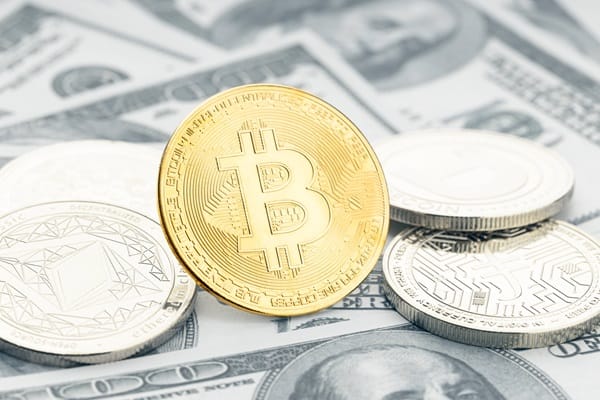Bussiness
Inflation continues to remain a problem – London Business News | Londonlovesbusiness.com

Grigory Burenkov*, columnist, Cypriot financial analyst, owner and board member of Osome Group, as well as founder and CEO of Wheelerson Management, on the reasons and consequences of lowering key interest rates in the US and EU.
“Last September, unlike most of the previous months of this year, brought economic optimism to both global investors and small business owners. One of the main reasons for this was the first reduction in the Federal Reserve’s key interest rate in almost four years. On September 18, the Federal Reserve lowered it by 50 basis points, setting the range to 4.75–5.00%. Earlier, on September 12, the European Central Bank reduced the key interest rate to 3.5%.
“Against the backdrop of the August global market downturn, such decisions seemed relatively unexpected but, at the same time, quite indicative. After a prolonged period of raising interest rates to combat inflation, the largest central banks have chosen a path toward easing monetary policy.
“How long regulators will adhere to this strategy and what consequences the global economy will face as a result of these steps will be explained by Grigory Burenkov, columnist, Cypriot financial analyst, owner and board member of Osome Group, as well as founder and CEO of Wheelerson Management.”
Fed policy: Inflation under control, but risks remain
“Undoubtedly, the US Federal Reserve (Fed) and the European Central Bank (ECB) have taken decisive steps to lower interest rates, signalling a new phase in their battle with economic challenges” says Grigory Burenkov. “These decisions reflect significant changes in economic priorities, which now include balancing the need to stimulate the economy with controlling inflation. It seems the Fed no longer views rising prices as the greatest threat.”
Indeed, the main reason for the Fed’s rate cut in the US was the slowdown in inflation and the weakening of the labour market. Recent data showed that price growth, particularly in light of falling energy costs, had eased, allowing the regulator to focus on other priorities, such as slowing economic growth and financial market stability.
The labour market also began showing signs of cooling: employment levels are rising slower than expected, and unemployment, while still low, started showing an upward trend. For example, in August 2024, unemployment rose from 3.5% to 3.8%.
According to Fed Chairman Jerome Powell, the decision to cut rates was driven by the need to “ensure sustainable economic growth that does not lead to inflationary risks.” Powell also noted that the Federal Reserve is prepared for further adjustments depending on price dynamics and labour market trends. Cypriot financial analyst Grigory Burenkov believes that American consumers will feel the positive effects of the rate cuts, but the impact may be delayed, and its real significance is still unclear at this point.
However, the Fed remains cautious in its forecasts. The recent rate cut was accompanied by hints from officials about possible further steps toward monetary easing. Specifically, the Fed may cut the rate by another 25 basis points in November and December if inflation and employment data continue to suggest the need for additional economic support. At the same time, the Fed does not rule out the possibility of tightening its policy if inflation accelerates faster than expected.
“I agree with those American economists and policymakers”, columnist Grigory Burenkov shares his opinion. “Who said that the rate cut was absolutely necessary to support the US middle class. However, they also warn against repeating past mistakes, when overly loose monetary policy enabled speculative bubbles. This leads to new crises that shake the economy”.
Eurozone: ECB’s opponent — complex inflation dynamics
The European Central Bank’s (ECB) September reduction of the key interest rate by 25 basis points was already the second this year. The first took place in June, with a similar 25 basis point cut, marking the first reduction in 11 years.
On one hand, this move signifies the regulator’s determination to support the economy amid weak growth and high inflation, coupled with strong wage pressures. On the other hand, ECB President Christine Lagarde emphasized that the current rate cut does not indicate a shift toward constant easing. “We are following the data, not assumptions. Each of our decisions will be based on careful analysis of economic dynamics to avoid both overheating the economy and inflationary pressure” Lagarde stated during a press conference following the ECB meeting.
Grigory Burenkov goes on to say “In my opinion, inflation in the Eurozone remains a problem for the ECB, and therefore for the EU economy as a whole. Overall price growth is slowing down, but in the services sector, inflation remains quite high due to significant wage growth — in August, it was 5.8%. This is tied to the particularities of the European labor market, where wage adjustments occur with a delay, leading to prolonged inflationary effects”.
Against this backdrop, the European regulator forecasts that inflation will return to its 2% target only by mid-2025. Until then, the ECB will likely continue adhering to a policy of gradual rate easing, which should help accelerate credit growth and support consumer demand.
The decision to cut rates was welcomed by EU officials. According to French Finance Minister Bruno Le Maire, the move will aid in the recovery of the economy. However, officials are also concerned about a new surge in inflation, especially in the energy and food sectors. In this case, Bruno Le Maire believes that close coordination between the ECB and governments, along with well-thought-out fiscal measures, will help mitigate the risks.
“Regulators will need to maintain balance and be extremely cautious moving forward”, says Grigory Burenkov, “as maintaining high rates for too long could not only weaken demand but also lead to a recession”.
Emerging markets: Opportunities and risks
The reduction of key interest rates in the United States and the European Union will have a wide range of consequences for emerging markets, many of which depend on capital flows and currency exchange rate fluctuations. Typically, when major regulators lower rates, investors begin seeking higher returns in emerging markets.
“This could lead to a capital influx into countries like Brazil, India, and South Africa, which, in turn, will stimulate their economic growth”, says Grigory Burenkov.
However, there are also risks involved in this situation. “Increased reliance on foreign investments can make emerging markets vulnerable to sudden capital outflows if central banks in the US or EU change their policies. However, I believe that local officials are preparing responses to such scenarios”, Grigory Burenkov noted.
* Grigory Burenkov, a columnist for international socio-political publications, a Cypriot financial analyst, investor, owner, and board member of Osome Group, as well as the founder and CEO of Wheelerson Management.










